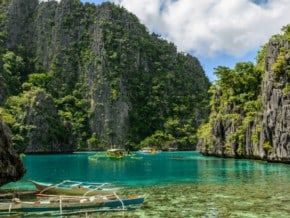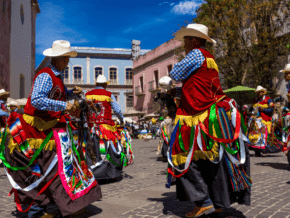The Philippines attracts tourists from across the globe throughout the year, but the pomp and circumstance of Filipino festivals is second to none. Most tourists say that these exhilarating, powerful events were one of the focal points of their holiday, so be sure to factor these in as you're deciding where to visit in the Philippines.
The Philippines have a lot to celebrate, too, from first discovering the land, to a good harvest, to the culture of the indigenous peoples. Keep reading to learn more about the country's rich culture. Here are 8 of the best festivals in the Philippines as well as when they occur.
1. Third week in January – Sinulog Festival
Where: Cebu City
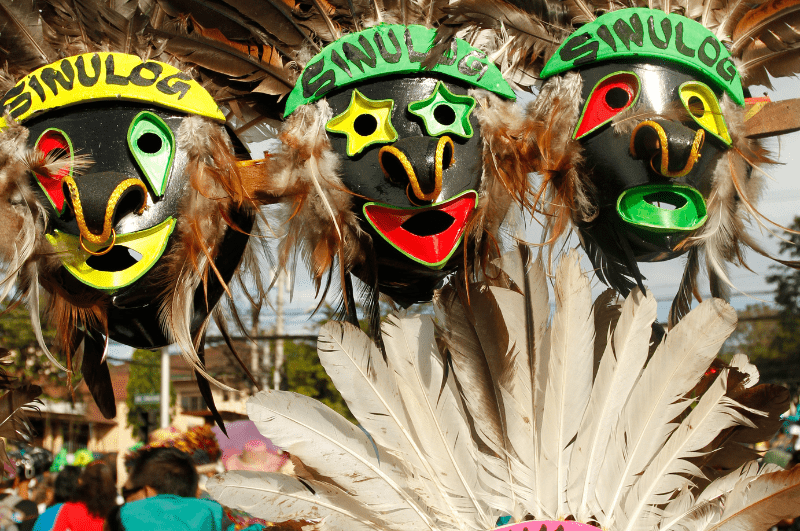
Thought to be one of the very first festivals among the many well-known traditions of the Philippines, the Sinulog Festival is a celebration and display of the Philippines' transition from paganism to Christianity.
Anywhere between one to two million visitors attend this festival each year to get a glimpse of the outrageously vibrant outfits of dancers as they perform the Sinulog (which roughly translates to “like water’s current”) movements together.
If you’re planning to visit the Philippines during mid-January, more specifically the third week of January, make sure you allow time to see this memorable event in Cebu City and take part in all of the street party festivities before and during the day of the celebration.
2. Third Sunday in January – Ati-Atihan Festival
Where: Aklan
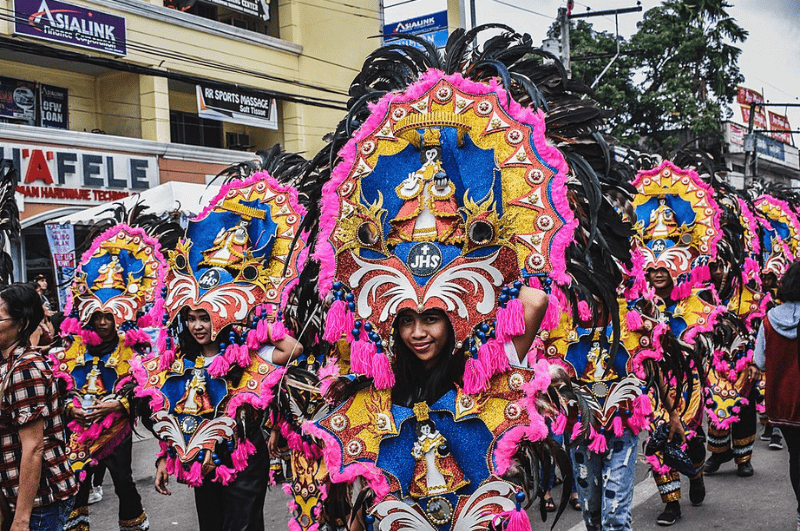
When it comes to festivals and celebrations in the Philippines, January is a busy month. The Ati-Atihan Festival located in Aklan is always celebrated on the third Sunday of January and is the third festival on this list to be celebrated in that month.
This festival is one of the oldest in all of the Philippines, having started over 800 years ago. It was created to celebrate the baby Jesus, hence why it is on a Sunday.
Like many holidays throughout the world, this was started as a pagan event and was later adapted to the Christian beliefs. Though the exact reasoning behind this festival isn’t exactly known, it was likely either in thanks for food, or gratitude for a peace treaty with other nearby cultures.
There is plenty of food, festivities, and of course drink involved. Though this starts with a parade of brightly-colored dancers on the street like many other festivals, this one isn’t designed just to watch.
Anyone, even tourists, can jump in and participate in the festivities and dance along with those in costume on the street.
3. Fourth Sunday in January – Dinagyang Festival
Where: Iloilo
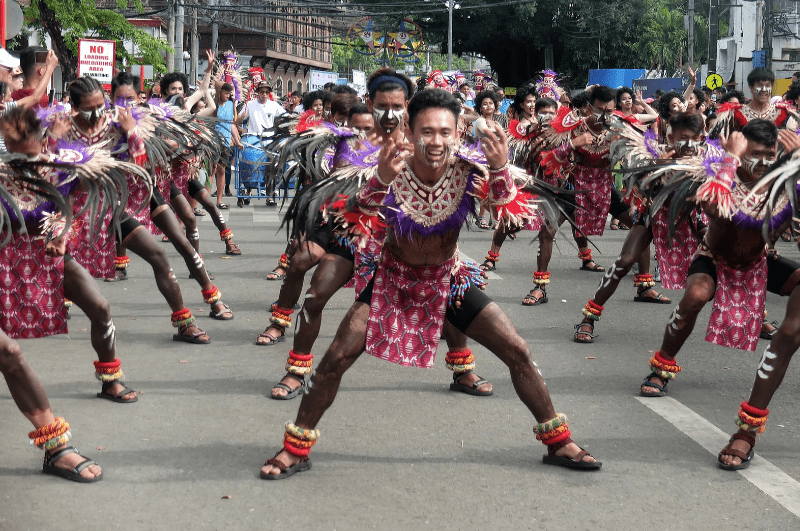
As if one massive festival in January wasn’t enough, the city of Iloilo hosts Dinagyang. Held on the fourth Sunday of January, Dinagyang is a local term for “merrymaking.” which is apt considering how well-attended the event is, both by locals and travelers from around the world.
Participation in the engaging dance competition is enjoyed by tribes, schools, and barangay (local government branches) alike while bands ring out their tunes throughout every street and alley. None will go hungry during this festival either, because of all the mouthwatering dishes and street foods available across the city.
The impressive dances and stunning costumes are a celebration of Santo Niño – the Holy Child (Jesus) – as well as the arrival of Malay settlers. The whole display alone makes visiting the Philippines at the end of January worthwhile!
4. Holy Week – Moriones Festival
Where: Marinduque
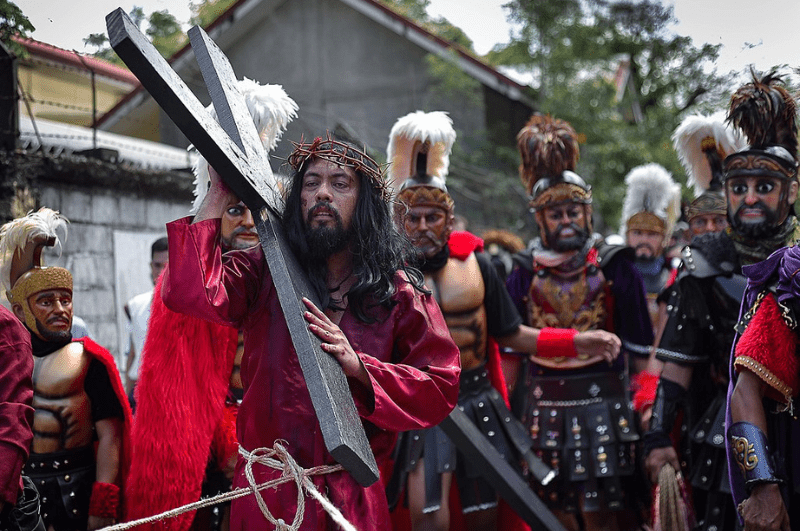
If you want a drama-filled festival, then the Moriones Festival is the festival for you. It was created to remember Saint Longinus, who was the centurion who stabbed Jesus with a spear during his crucifixion. The blood from Jesus is said to have healed his failing eyesight and caused him to abandon his Roman soldier training and convert.
Known as moriones, hundreds of men and women in uniforms and tunics reminiscent of Roman outfits roam through the streets, scaring children and pretending they are looking for St. Longinus.
Unfortunately, St. Longinus was eventually caught by his fellow soldiers and beheaded, but people still remember and honor him to this day.
This festival is held during Holy Week, which occurs somewhere around late March to early April.
5. May 15 – Pahiyas Festival
Where: Lucban, Quezon
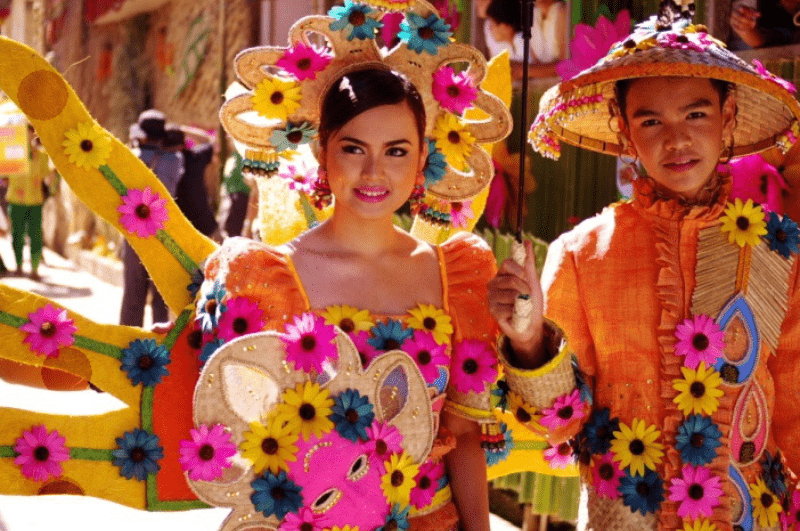
The Pahiyas Festival originated when the local farmers would take some of their crops and place them in the church to celebrate and honor St. Isidor the Laborer. This was their patron saint and the food would then be blessed the harvest and ask for thanks from the saint.
Now, over time, the religious meaning behind the festival has fallen to the side to become more of a way to celebrate and have pageantries. Bright colors, fruits, and vegetables are displayed throughout the city of Lucban.
Held on May 15 every year, this is just one creative way that the city of Lucban attracts droves of tourists.
6. June 29 – Pintados Festival
Where: Tacloban
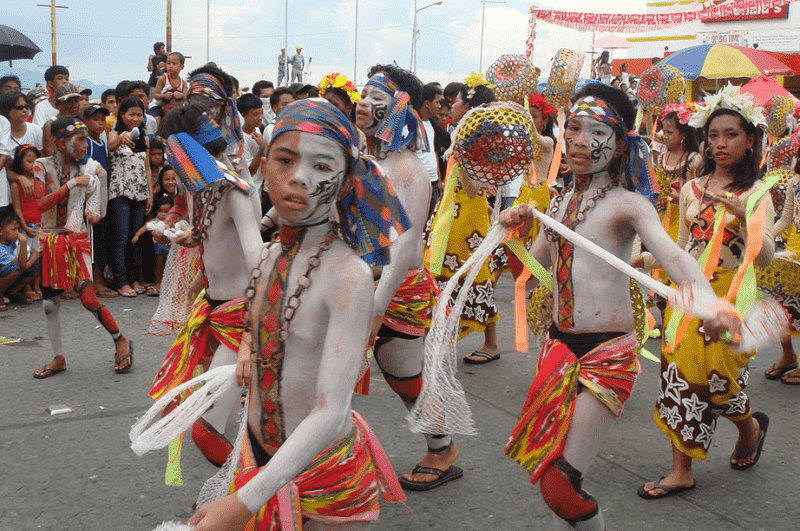
The Pintados Festival was designed to show the life and culture of people before the Spanish arrived and detailed how they lived their life. Locals wander the street with tattoos and ink reminiscent of the original tribespeople.
The festival is held on June 29th. However, if you can’t come to the Philippines until early July, don’t worry, the festival lasts for over a month. There are stalls filled with trinkets, decorations, and bits of history as well as food and drinks, so make sure you bring some money with you to spend.
There are even beauty pageants during this time to find the most beautiful woman that have rich personalities and wit. Though this festival isn’t one of the oldest, it is one of the most looked forward to out of the year.
7. November 22-23 – Higantes Festival
Where: Angono, Rizal
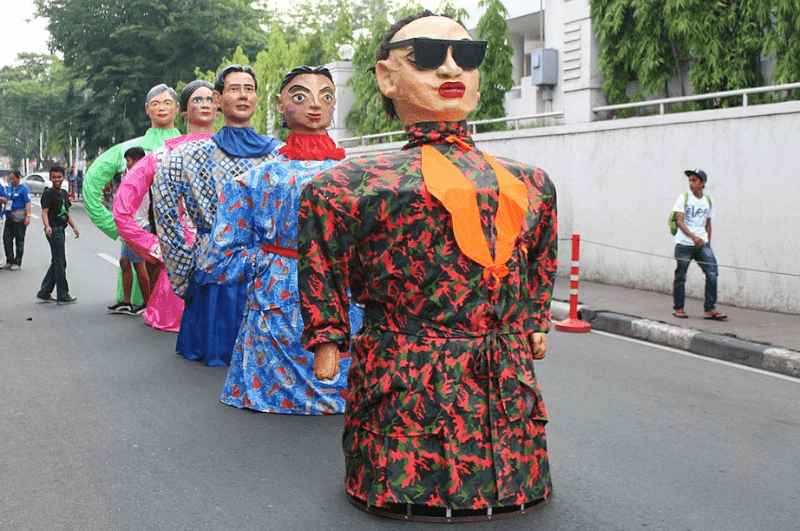
While the Higante Festival is a little less known than some of the others, it represents a powerful history all the same. Using giant papier-mâché figures – known as higantes by the locals – the Filipino people honor their patron saint San Clemente.
The festival is held in November, on the 22 and 23 of the month. This is a time for celebration and feasting. The higantes can be as tall as 12 feet and represent their fight against the Spanish inquisition. Originally, these figures were thought to offer protection from the Spanish.
However, much is unknown about the history of these figurines and whether they were a thing before recent times. Either way, the festival is a time to feast and celebrate life.
8. December – Giant Lantern Festival
Where: San Fernando
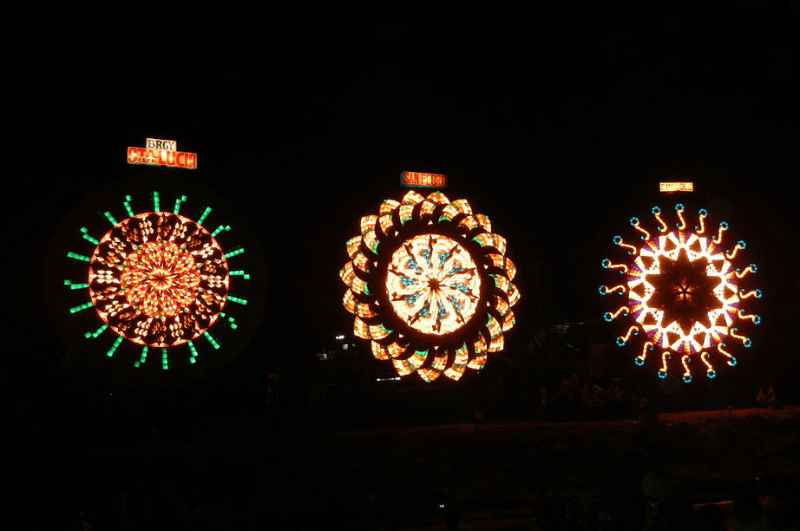
What’s better than beautiful Christmas lights? Perhaps GIANT beautiful Christmas lanterns! There is a reason why the city of San Fernando is called the Christmas Capital of the Philippines.
The Giant Lantern Festival is a traditional competition where teams from different barangays (villages) compete to see who can make the biggest and most creative lanterns out of bamboo and paper.
Held the weekend before Christmas, the giant lanterns, or “parols” as they are called in Filipino, are handcrafted and can be as large as 16 feet tall and 12 feet in diameter. The designs are always unique and often reflect themes from current events or pop culture.
The festival begins with a procession of the lanterns through the streets of San Fernando, culminating with a big display at Heritage Park. The display typically lasts for several hours, during which onlookers can enjoy food, music, and other entertainment while admiring the lanterns.
The festival has been held for over 100 years and has become quite a tourist attraction. It is considered one of the most popular and biggest lantern festivals in the world, attracting thousands of visitors each year.
If you're looking for a unique and festive experience, be sure to check out the Giant Lantern Festival. It's one of the most beautiful festivals in the Philippines!
Final thoughts about festivals in the Philippines
Festivals in the Philippines are a great way to learn more about Filipino culture and meet new people. The atmosphere is always festive and there is always lots to see and do. So if you’re planning on visiting the Philippines soon, be sure to check out when any local festivals are taking place so that you can experience them for yourself!
Have you ever been to a festival in the Philippines? What was your experience like? Share your stories in the comments below!

